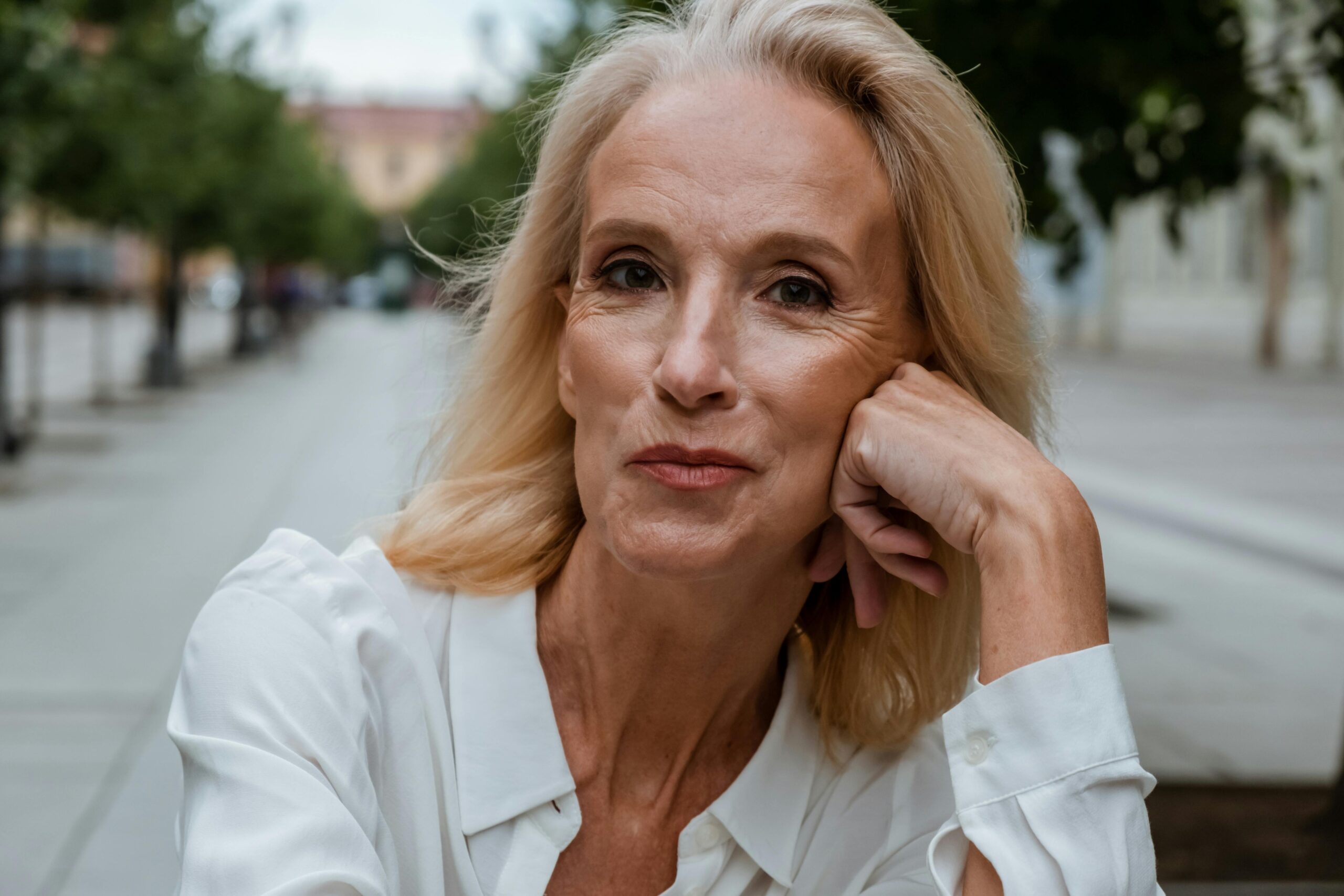New Research Has Defined The Maximum Age Humans Can Reach

We’ve added decades to the average human life over the past century. A child born today in Japan or Switzerland has a good shot at seeing their 90s. And yet, the oldest person ever verified—Jeanne Calment—died more than 25 years ago at 122, a record that still stands untouched.
This raises a haunting, almost paradoxical question: If we’re living longer, why aren’t we living oldest?
Some scientists now believe we’ve stumbled onto nature’s upper limit—a point where the body’s resilience runs out, no matter the breakthroughs in medicine or bioengineering. They’re not just guessing. They’re using hard data, advanced statistics, and decades of global research to define that line in the sand.
So, how long can humans really live? And more importantly—what should we make of the answer?
The Myth of Limitless Longevity
We’ve long been seduced by the idea that aging is just another problem science will eventually solve. From ancient quests for the Fountain of Youth to Silicon Valley’s billion-dollar bets on biohacking, the dream of living forever—or at least far longer—persists. Some futurists speak confidently of lifespans stretching to 150, 200, even 1,000 years. But is this future realistic—or just wishful thinking dressed in lab coats?
Over the last century, life expectancy has undeniably soared. In the early 1900s, the average global lifespan hovered around 31 years. Today, in wealthier nations, it’s above 70. This progress, however, stems not from a fundamental change in how we age, but from victories over infection, malnutrition, and childbirth complications. We’ve added years by preventing early death—not by radically slowing aging itself.

This distinction matters. Because while average lifespans have grown, the age of the oldest humans hasn’t budged. Jeanne Calment, born in 1875, still holds the record for the longest confirmed human life at 122 years. Since her death in 1997, no one has come close to breaking it. Despite all our medical advances, despite the rise of genomics, personalized medicine, and artificial intelligence, we haven’t added even a single year to the known upper bound of human life.
That’s not an accident. It may be a signal—a hint that there’s a built-in biological limit, a kind of cellular expiration date hardwired into our very genes.
And yet, the myth of limitless longevity lingers. It’s tempting, after all. The idea that we might outrun death with the right pill, gene tweak, or therapy is a narrative as old as mortality itself. But myths are powerful not because they’re true—but because they touch something we desperately wish were true.
The Science Speaks: A Biological Ceiling

A groundbreaking study out of the Netherlands, led by researchers at Tilburg and Erasmus universities, analyzed more than 75,000 death records over a 30-year period. What they found wasn’t just a pattern—it was a plateau. Despite more people living well into their 90s and 100s, the age of the very oldest individuals hasn’t shifted in decades. Statistically, women peaked at about 115.7 years, men at 114.1—and that’s where the line holds.
Professor John Einmahl, one of the study’s lead authors, put it plainly: “There is certainly some kind of a wall here.” That wall may not be visible, but it’s firm—a biological ceiling that resists even the best of modern medicine. And he’s not alone in this conclusion.
Using a sophisticated statistical tool known as Extreme Value Theory, the researchers assessed the rarest data points—extreme old age—and found that the limit to human lifespan has remained remarkably stable. That’s despite major advancements in healthcare, nutrition, and technology. In simpler terms: we’re pushing the average, but the maximum isn’t budging.
This observation isn’t isolated. An international analysis of the world’s longest-lived populations—places like Japan, Sweden, and South Korea—found the same trend. Since 1990, the pace at which life expectancy increases has slowed, particularly at older ages. Mortality is becoming harder to reduce. Radical life extension, defined as increasing life expectancy by 3 years per decade, is no longer occurring in most countries. In fact, in places like the U.S., life expectancy has even declined in recent years due to midlife health crises and the COVID-19 pandemic.
The data shows that getting to 100 years old is still an incredibly rare feat—only about 5% of women and less than 2% of men born in the world’s most developed nations today are likely to reach that milestone. And going beyond that? Even rarer.
These numbers challenge the narrative of boundless longevity. They suggest that aging isn’t just the accumulation of damage, but a deeply encoded biological process—one that resists manipulation once we reach the upper limits of the human life course. The body, in essence, seems to have a pre-set limit.
Longevity Legends: What We Can Learn from Supercentenarians

Jeanne Calment, who lived to 122 years and 164 days, remains the oldest verified human in history. She outlived both world wars, saw the invention of the airplane and the internet, and attributed her long life to olive oil, chocolate, and a sense of humor. Kane Tanaka, who passed away at 119, enjoyed puzzles, soda, and family visits well into her final years. Sarah Knauss, calm and composed, lived through three centuries and nearly reached 120. These individuals—and others like Lucile Randon, Maria Branyas Morera, and Jiroemon Kimura—are statistical miracles, verified through meticulous documentation.
But here’s the critical point: they are not the norm. Each lived an exceptionally long life, yes—but what makes them extraordinary is precisely how rare their stories are. Despite decades of public health advances, verified supercentenarians remain a tiny, elite club. Reaching 110 is incredibly rare; surpassing 115 is nearly unheard of. Even as average life expectancy has grown, the ceiling of human age has barely moved.
So, what secrets—if any—can we learn from these individuals?
Research suggests their longevity arises from a combination of genetics, lifestyle, environment, and luck. Many had relatively healthy habits, but not obsessively so. Some didn’t even follow the expected script—Jeanne Calment reportedly smoked into her 90s. What they seem to share, beyond the genetic lottery, is resilience—not just physical, but emotional. Optimism, a strong sense of purpose, and social connection show up again and again in their stories.
Scientifically, many experts agree that genetics play a dominant role in reaching extreme old age. Studies of centenarians show unique genetic variants linked to slower cellular aging and stronger resistance to diseases like cancer and cardiovascular conditions. Their bodies may repair DNA more effectively or resist inflammation more efficiently—giving them an edge most people simply don’t inherit.
But even with these advantages, supercentenarians do not escape aging. They, too, become frail. They, too, encounter the limitations of biology. Their existence is a testament not to infinite possibility, but to the outer limits of human endurance.
Why We’re Not Likely to Live to 150—At Least Not Yet

Comprehensive research from some of the world’s most respected demographers and longevity scientists shows that radical life extension is implausible in this century, at least for already long-lived populations. Since 1990, the pace of improvement in life expectancy has decelerated, not accelerated. For most high-income nations, the annual gain in life expectancy has slowed to less than 0.2 years per year—far below the 0.3 years per year required to qualify as “radical life extension.”
Even more telling: the odds of surviving to 100 remain slim. According to life table data, only about 5% of women and 2% of men in the world’s longest-lived countries today are expected to reach age 100. And beyond that? The probabilities plummet. To achieve a life expectancy of 110 years across the population—a figure often thrown around in longevity hype—we’d need death rates across all ages to fall by as much as 88%. That would require nothing short of curing most major causes of death, from cancer to heart disease to neurodegeneration. We are nowhere near that.
Another major hurdle is what scientists call the “mortality floor.” This refers to a biological threshold below which death rates at older ages simply don’t fall, no matter how healthy or wealthy the population. Since the 1990s, we’ve seen this floor asserting itself: gains in survival at very old ages have become harder and harder to achieve. It’s as if nature itself is applying the brakes.
And then there’s biology. Aging isn’t just a matter of damage—it may be a programmed process. From the shrinking of the thymus in early adulthood to the slow decline in cell repair mechanisms, some scientists believe aging is embedded deep in our genetic code. To delay or reverse it would require reprogramming the body on a cellular and molecular level—a feat we’re only beginning to understand, let alone master.
Yes, there are promising compounds like rapamycin, which has extended the lifespan of lab animals by 10–15%. Yes, studies of long-lived animals like the bowhead whale and naked mole rat are revealing fascinating genetic insights. But translating those findings into safe, effective, and scalable human therapies is still a distant goal.
The optimism around defeating aging isn’t entirely misplaced—it’s just premature. Real breakthroughs may come. But for now, we’re working within a biological system that has limits. The dream of 150-year lifespans might not be impossible—but it’s certainly not imminent.
Hope Beyond the Horizon: The Future of Aging Science

A quiet revolution is happening in labs around the world—not in fighting disease per se, but in tackling aging itself. This field, known as geroscience, aims not just to extend life, but to delay or even reverse the biological processes that cause us to age. And while we may not be close to living to 150, there’s real hope that we can live better for longer.
Take rapamycin, for example. Originally used to prevent organ rejection, this compound has become one of the most studied “longevity drugs.” In animal models, it extends life by up to 15%, and some early human trials are exploring its use in slowing aging-related decline. Other compounds, like metformin (a common diabetes drug), are also being tested for their anti-aging effects. The key isn’t necessarily in adding more years—but in adding more good years.
There’s also growing interest in genetic and epigenetic interventions. Scientists are learning from species like the naked mole rat, which lives 30 years—ten times longer than its rodent cousins—and rarely gets cancer. Or the bowhead whale, which can live over 200 years and has remarkable DNA repair abilities. By identifying the genes that grant these creatures longevity, researchers hope to find clues to enhance human resilience at the cellular level.
We’re also beginning to understand aging as a kind of biological software problem—not just wear and tear, but deeply embedded programs in our DNA that guide development early in life and become harmful later. If those programs can be tweaked or rewritten, the aging process itself might be slowed down. Experimental therapies, including cell reprogramming and immune system rejuvenation, are starting to explore this frontier.
To be clear, we’re still far from a miracle pill. Most of these interventions are in early stages, and their long-term effects are unknown. But the potential is there. Not for immortality—but for a second longevity revolution, one that could extend healthspan, not just lifespan.
That’s the real promise: a life not only longer, but richer in vitality, strength, and clarity. A future where reaching 90 doesn’t mean frailty, but freedom.
But perhaps the most powerful shift is philosophical. Instead of simply delaying death, the focus is shifting toward enhancing life—understanding that the quality of our years matters more than their quantity. In a way, science is catching up to something we’ve always known deep down: that it’s not just about how long we live, but how well.
How Will You Live the Years You Have?

In the pursuit of more time, we often forget to ask what we’re really doing with the time we already have.
Yes, science is inching closer to understanding aging. Yes, breakthroughs may one day give us a few more years—or even decades. But no discovery will ever replace the choices we make today: how we treat our bodies, how we feed our minds, how we connect with others, and how we live with purpose.
Because here’s the truth: we don’t need 150 years to live a full life. We just need to be fully alive in the years we’re given.
Many of the supercentenarians who defied the odds didn’t live perfect lives. Some drank soda. Some never exercised. Some had little knowledge of biohacking or longevity science. What they often shared, though, was a sense of joy. Curiosity. Resilience. A deep connection to community, faith, or family. These are not medical miracles—they’re human choices.
And those choices are available to all of us.
So maybe the question isn’t “How long can we live?”
Maybe the better question is, “How intentionally are we living now?”
You don’t need a breakthrough to eat better, move more, sleep deeper, or love harder. You don’t need a scientific discovery to pursue your purpose, reconnect with someone you’ve drifted from, or pause long enough to savor a sunrise. These are acts of longevity too—not in the span of your life, but in the depth of your living.
So while researchers search for the edge of human life, ask yourself: What will I do with the years I already have? What kind of legacy will I leave—not just in age, but in impact?
Because the clock is ticking—not as a countdown to death, but as a reminder to live.
What Longevity Research Teaches Us About Living Well Today

At first glance, research defining the maximum human lifespan might seem like it belongs in a textbook—not in the world of personal growth or motivation. But look closer, and there’s a powerful message hidden within the science: life is finite—and that’s exactly what makes it meaningful.
When scientists say we’re likely capped at 115 to 120 years, it doesn’t diminish our potential—it sharpens it. It’s a reminder that time is not just a resource; it’s the resource. And how we spend it—how we show up in our relationships, our careers, our goals—matters more than ever.
This insight can be a catalyst for focus. If you know that your time isn’t limitless, the distractions lose their grip. You’re less likely to waste a morning scrolling, less tempted to delay your dreams until “someday.” Suddenly, today becomes urgent. Not frantic, but sacred.
Understanding our biological limits can also shift our definition of success. Instead of chasing eternal youth or fearing the passage of time, we can start asking:
- Am I living in alignment with what really matters to me?
- Am I creating, contributing, connecting in a way that energizes my spirit?
- Am I building something—whether it’s a business, a relationship, or a legacy—that reflects my values?
What we learn from the science is that the outer edge of life may not stretch forever—but the inner experience of life can expand with depth, clarity, and purpose.
So here’s how you apply this research in your daily life:
- Use urgency as fuel. Knowing there’s a ceiling can help you stop procrastinating on the things that matter. Set clearer goals, not because time is running out—but because now is the best time to begin.
- Invest in your health like it’s your most precious asset—because it is. While we may not extend lifespan drastically yet, we can radically improve healthspan—the quality of our daily energy, clarity, and strength.
- Redefine success through presence. The most fulfilled people aren’t necessarily the longest-lived—they’re the most engaged. Bring your full attention to what you do and who you do it with.
- Make peace with limits. When you stop fighting the reality of death, you often start living more fully. Gratitude becomes sharper. Relationships grow deeper. The “someday” list becomes today’s to-do list.
This new understanding of human limits isn’t a barrier—it’s a boundary that invites discipline, clarity, and purpose. It’s an invitation to live—not endlessly, but meaningfully.
Living Fully Within Our Limits
At the end of it all, the question of how long we can live fades into the background of a much more powerful one: How fully are we living now?
Science has shown us that our time here, while extraordinary, is still bounded. Even with the best genes, the cleanest diet, the most advanced therapies—there’s a ceiling. And yet, that ceiling doesn’t confine us. It focuses us. It reminds us that the value of a life isn’t measured by its length, but by its depth.
You may never reach 120. You may not need to.
Because the legacy you leave won’t come from the number of years you lived—it will come from how bravely you loved, how passionately you pursued your calling, how intentionally you moved through each day.
We don’t need immortality to live meaningful lives. We need awareness. We need alignment. We need courage.

